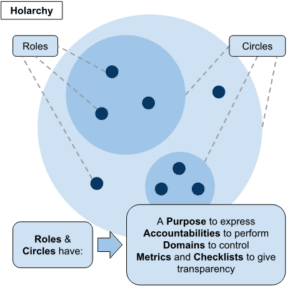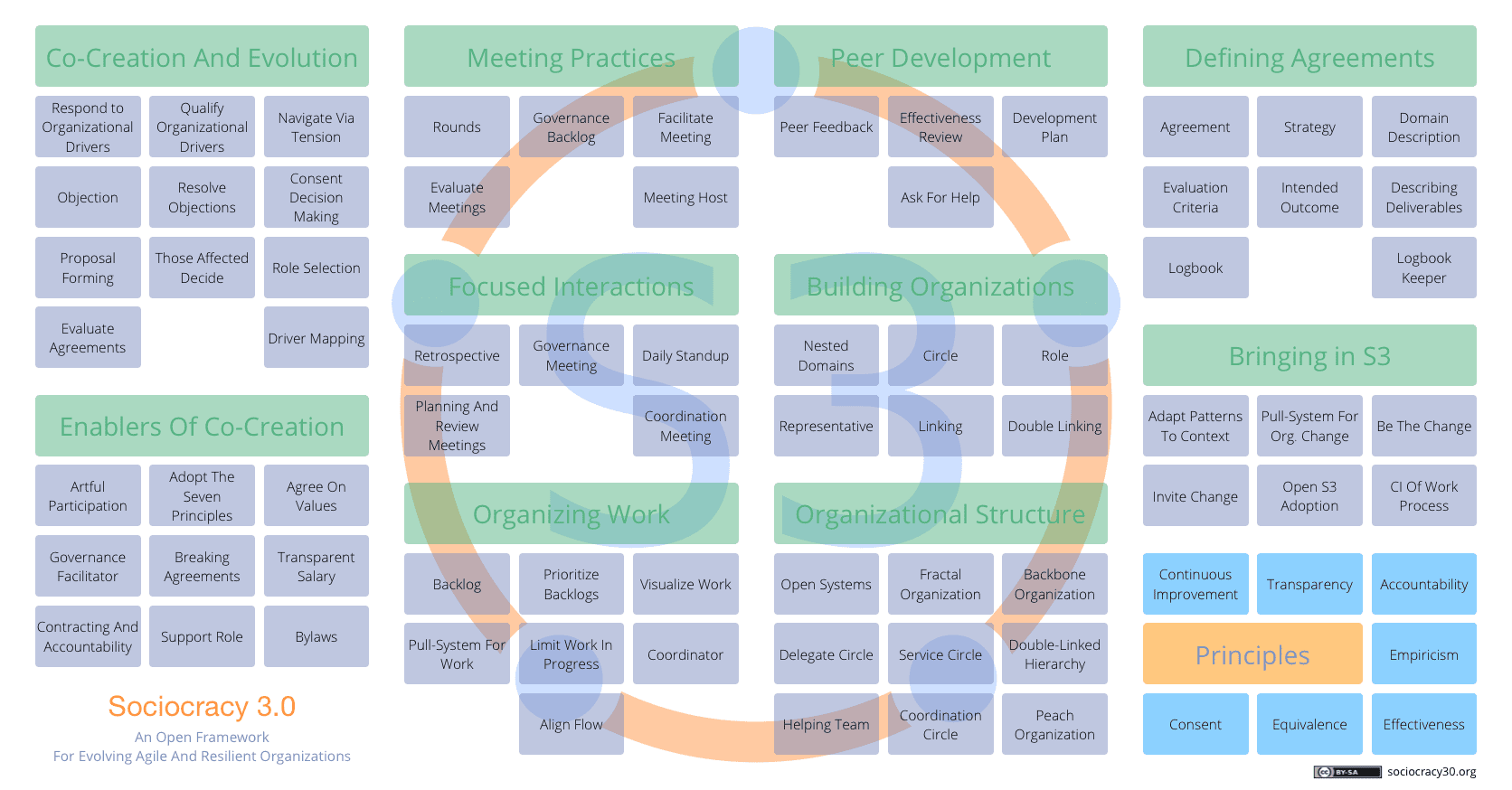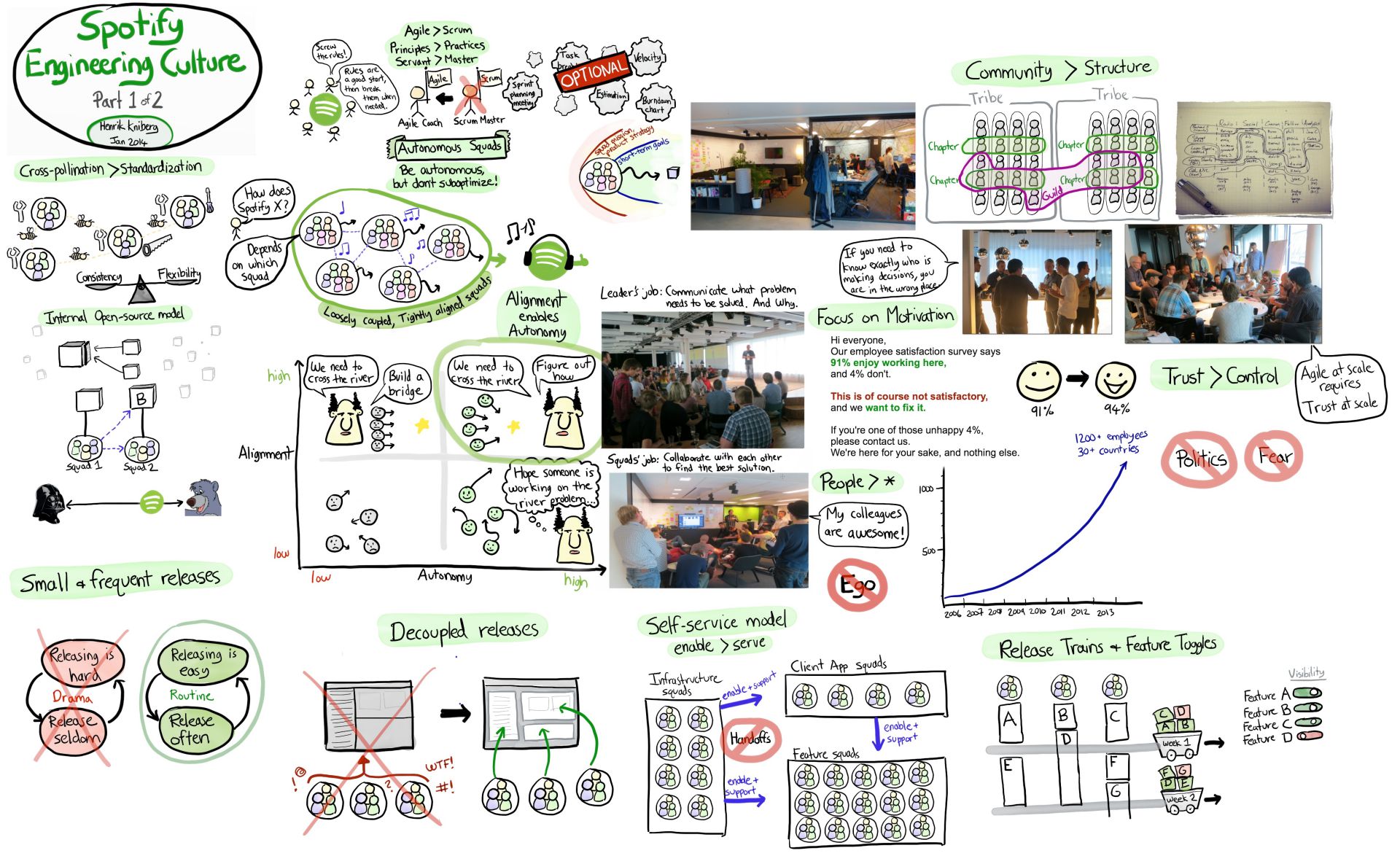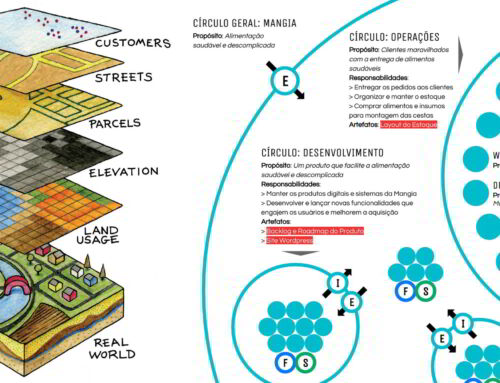You have a brilliant business idea and a good team. Your company is growing and now it’s time to create some structures to coordinate work. What do you do? Chain of command, endless alignment meetings, C-levels and performance evaluations. The pyramid is set up and the bureaucracy takes over.
Stop right there! Have you noticed that you are doing the same thing, yet expecting different results? Your startup deserves a more innovative organizational structure, with a better adaptation capacity. I’m talking about a more agile alternative that can navigate in the VUCA world.
Here are some different approaches to organizational structure that better fit a startup culture.
Holacracy
Holacracy is a governance system for organizations that divides the structure into a hierarchy of nested circles. It defines clear rules of how roles (not positions) are created, changed, and destroyed, and also how the operational process of coordination happens. It’s a highly structured framework and leaves little room for doubt about who is accountable for what.
The system promises to maximize autonomy and streamline decisions, but without falling into dramas of consensus or endless group discussions. All the rules of the system are described in a constitution of less than 40 pages, which replaces the autocratic power usually exercised by the owners (or the board) of a company.
Understanding how Holacracy works in depth is not easy. The best way is by practicing or reading this post with infographics that we created.
Sociocracy 3.0 (S3)
If Holacracy is a closed system, S3 is a broader, open pattern language. Sociocracy 3.0 was heavily influenced by Holacracy and uses similar resources such as circles, roles, and governance. The difference is that the S3 allows you to select some patterns and introduce them to your team or organization, without having to adopt a complete system. Obviously the selection of which practices are appropriate requires a certain knowledge of their interdependence.
Decisions in S3 are based on consent, that is, they are adopted if there is no clear reason not to. While Holacracy seeks to generate some independence for individuals through individual autocratic decisions, in S3 the group makes more decisions (beyond those of governance) through consent.
For example, if you fill a Product Pricer role accountable for determining product prices, in Holacracy you could do this without any query to the group. In Sociocracy 3.0, however, it’s a common practice to present a strategy to the group before making the decision, seeking the consent of the other members on the approach. Remember that this is a pattern in S3, so it’s also optional.
Spotify Squads
The Spotify organizational structure became popular after Henrik Kniberg published a video detailing the workings of the company’s internal structure, which is divided into squads, chapters, tribes and guilds.
Squads are multidisciplinary development groups that are responsible for improving and maintaining a particular piece of the product. The squad doesn’t have a boss, but a Product Owner who determines priorities of what will be built. Chapters are functional lines that cross several squads and guarantee communication and alignment by discipline (engineering, design, agile coaching, product, and so on) among several groups. The chapter has a lead that acts similarly to a line manager in a matrix structure.
Tribes are groupings of 2 or more squads that act on an interconnected portion of the product and therefore need to maintain a greater alignment. For example, the Android app squad and iOS app squad could be connected by a tribe of mobile apps. Lastly, guilds are made up of groups of people from any discipline or squad interested in a common subject, such as automated testing.
According to Henrik, their organizational structure allows the creation of a context with both high autonomy in squads and high alignment through chapters, tribes and guilds, which keeps the organization connected. It’s also interesting to note that the structure was developed for product/software teams and doesn’t have known applications for other areas, such as marketing and finance, for example.
Many organizations have been adopting the Spotify model since the publication of Henrik. Some even blindly copy the model without any reflection on its applicability on their context or in-depth understanding of the underlying principles. We believe that their case serves as a reference, but we don’t recommend reckless copying.
Organic Organization (O²)
We at Target Teal are not satisfied with the existing organizational structures. So we are developing a fourth option in conjunction with other org design companies. :)
Organic Organization is a self-organizing catalyst for teams and companies, inspired by Holacracy and S3. Unlike the first, O² is open, more flexible and with a simpler language than that of a Constitution. We also believe it will be easier to apply than S3, with a clear distinction between essential and optional practices.
The O² is made from a set of meta-agreements and a pattern library. The first contains the essential rules of the game, which basically determines what is allowed and what is forbidden. The pattern library is an extensive reference to standards, practices, and modifications that can be applied as your experience with the method increases.
Your own organizational structure
In the end, all the organizational structures we mentioned above are references. You may need to create something more custom for your context. That was what Buurtzorg, Morning Star and FAVI did. Just be careful though, because organizational development and design are complex matters. A more experimental approach, such as Cultural Design, can also work well.
Your startup deserves a more innovative organizational structure that puts everyone’s heads to think. Don’t fall into the temptation to go to the known territory of management, separating planning from execution. And if you need help on this mission, tell us! ;)









[…] management. You do what your boss says. Power needs to be delegated from top to bottom. And so on. Some approaches have come up to try to propose a “rewriting” of this system, although there are just a […]